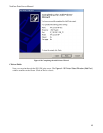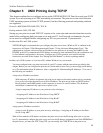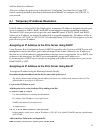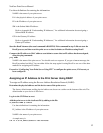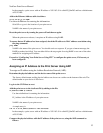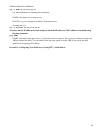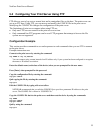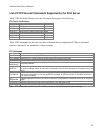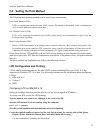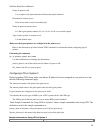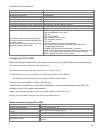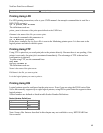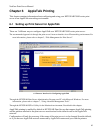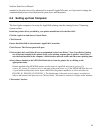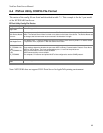
NetGear Print Server Manual
5-3 Setting the Print Method
The following three printing methods can be used in any environment:
Line Printer Daemon (LPD)
LPD is a standard print method for most UNIX systems. The benefit of this method is that it eliminates the
need to install additional software on the host.
File Transfer Protocol (FTP)
FTP is also a standard print method in most UNIX systems, but it is not recommended except as a test and
backup method of printing.
Direct Socket Interface (DSI)
DSI is a UNIX-based method of providing a direct connection between a host computer and a printer. The
host and the print server establish a TCP connection, using a special socket number. All data sent over this
connection is treated as print data and sent transparently to a logical printer defined on the print server.
Of the three choices, LPD and DSI work well with a large number of users because they both employ
print queue processes. FTP does not implement a print queue; if the printer is busy, the print command
may fail.
The three methods are explained more fully in the following sections.
LPD Configuration and Printing
LPD is a built-in printing protocol for most UNIX systems including BSD type UNIX. It is also
supported in Windows NT 3.5 or later. The following sections provide information about configuring
LPD on:
• IBM AIX 4.15
• System V
• BSD
Configuring LPD on IBM AIX 4.15
Before proceeding, make sure that the print server has been assigned an IP address.
To set up your AIX system for LPD printing:
Type the name of your print server, adding it to the /etc/hosts.lpd file.
Start the LPD daemon if it is not running, using the command:
start src -s qdaemon
Start the system administration tool smith and select Print Spooling.
Create the required number of queues (one for each logical printer) by selecting Add a Print Queue,
Remote (Printer attached to Remote Host), and then Standard Processing.
Use these definitions for entering the information:
57



